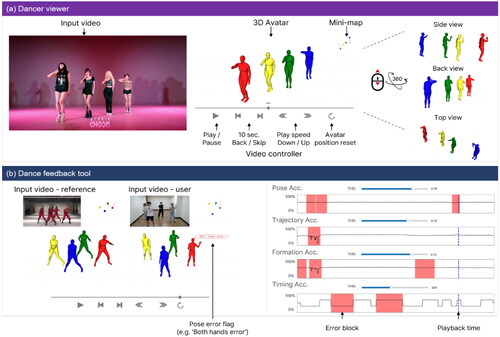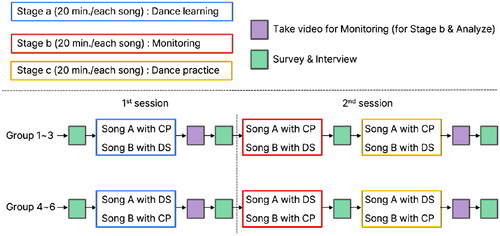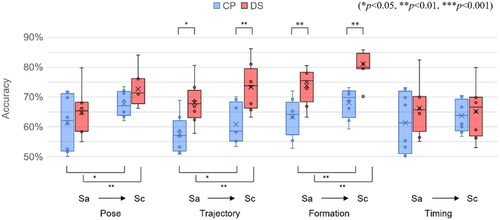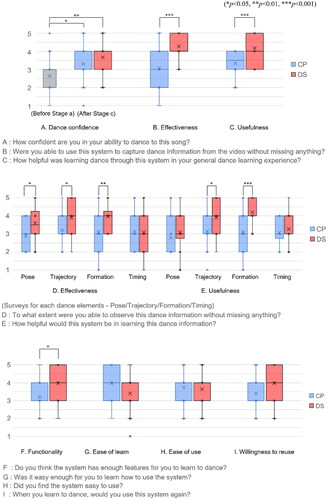Figures & data
Figure 1. Characteristics of commonly used dance practice videos (2D) (a) example scene in a video (https://www.youtube.com/watch?v=wU2siJ2c5TA&ab_channel=NewJeans) where the view shifts to highlight a specific body part of a dancer; (b) Another example scene in a video (https://www.youtube.com/watch?v=qsHvdRA0a6o&ab_channel=NewJeans) where the view is fixed to show the entire body of the dancer (Note that the two videos are different videos of the same dance).

Figure 2. The overall architecture of the DanceSculpt system (a) dancer viewer; (b) dance feedback tool.
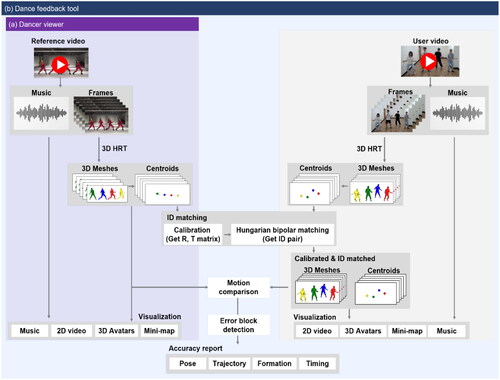
Table 1. Behavioral response variables and signals.
Table 2. The average frequency of behavioral responses observed in each stage (standard deviations in parentheses).

